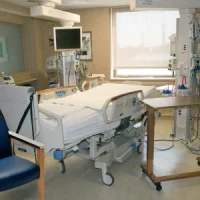A study from the University of Colorado Cancer Center suggests that medical breakthroughs may not be as valuable as they appear in scientific journals if their delivery to patients in the real world is not feasible. Understanding the health economics of a particular treatment involves calculating the incremental cost effectiveness ratio (ICER) which can change as more is learned about a new drug and the condition(s) it may treat.
“Increasingly physicians are being presented with health economic analyses in mainstream medical journals as a means of potentially influencing their prescribing. However, it is only when you understand the multiple assumptions behind these calculations that you can see that they are by no means absolute truths,” said D. Ross Camidge, MD, PhD.
Camidge and Adam Atherly, PhD have published an opinion advising consumers to inform themselves about the assumptions which underly the incremental cost effectiveness ratio calculations. They show how each component of the overall calculation can change the resulting ICER.
“Something that might seem clear-cut from the outside really gets tricky and much less definite when you pull it apart,” said Atherly. “The cost per unit of health that is used to determine if a drug is or isn’t used seems like an unequivocal fact, but is often highly equivocal.”
According to the researchers, the cost for each year of life (or each quality-adjusted year of life) gained by a certain treatment must factor into the calculation, so that patients and physicians can decide whether to change treatment or to add a new therapy to the treatment plan. The result of the calculation determines when a treatment becomes “worth it”, but that can vary according to the model’s assumptions.
The Case of Non-Small Cell Lung Cancer
The study offers the example of non-small cell lung cancer (NSCLC), the treatment of which may involve crizotinib instead of standard chemotherapy. A Canadian study showed that prescribing crizotinib for patients with ALK+ lung cancer would cost $255,970 for each quality-adjusted year of life gained by the therapy. That figure took into account screening, drug expenses, and the benefits and side effects of the drug compared to the standard second-line chemotherapy.
In this case, the cost of crizotinib exceeds the amount that most insurers would pay, making the drug not necessarily worthwhile for the treatment of ALK+ lung cancer. However, adjusting the assumptions of the model can yield a different perspective, and a different value.
The Canadian study reported that crizotinib offered a 50 percent quality of life for patients to whom it was prescribed. Meanwhile, many patients report a much higher quality of life: 90 percent. That changes the cost effectiveness ratio, with the drug dropping from $255,970 to $143,421 per quality-adjusted life year gained by patients through the therapy. The drug becomes less expensive per “unit” of health as quality of life improves.
Optimised screening methods can also have an impact on the perceived cost of therapies. For example, screening for the ALK gene alteration might cost $50,000 per case if only one is found in a screened population of 50 people. Improved testing procedures could drop the cost to $10,000 per treatable case if five cases are detected during the testing of 50 people.
"With multiple other examples of giving specific targeted drugs to specific molecular subtypes of disease occurring, it is becoming vitally important to accurately address the health economics of these personalised medicine scenarios," the authors wrote.
The study appears in the Journal of Thoracic Disease.
Source: University of Colorado Cancer Center
Image Credit: Pixabay









